Notes: Eyarth station was situated on the Denbigh, Ruthin and Corwen Railway (DRCR) which was incorporated under an act of July 1860 opening in stages between March 1862 and October 1864. Eyarth station opened with the second section of the line to come into use, between Ruthin and Gwyddelwern, on the 6th October 1864.
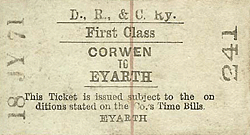 |
The station was 8.5 miles from Denbigh and and close to the village of Llanfair Dyffryn. Situated on the west side of a country lane Eyarth station was provided with one low platform on the east side of the line on which stood a two storey building that contained a booking office and staff accommodation including a house for the station master. A single storey brick built waiting |
room was provided at the south end of the station and a single storey wooden waiting room and lamp room was provided at the northern end. Because of the stations remote location it was also provided with its own well so that water could be accessed. A small goods yard was provided at the south end of the station and there was a goods loop on the western side of the line.
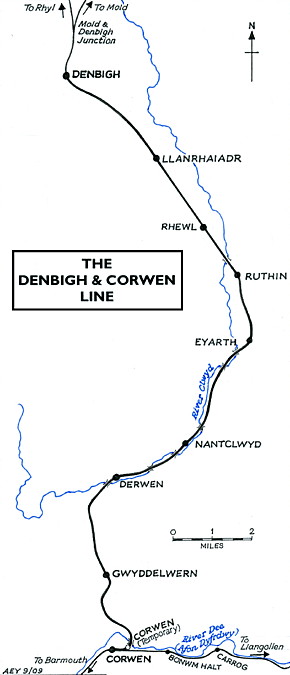 |
When the station first opened the DRCR ran its own train services but by 1866 the company was in financial difficulty and services were provided by the LNWR. The LNWR formerly absorbed the line into its ownership on the 1st July 1879. In 1875 Eyarth Station was served by three trains in each direction on weekdays which ran between Corwen and Denbigh.
By 1904 the Eyarth was served by five trains in each direction running between Corwen and Denbigh. The service frequency remained the same in July1922 there being departures for Corwen at 9.17am, 12.25pm, 3.50pm, 5.37pm and at 8.22pm. In the other direction the trains ran through to Chester departing at 8.28am, 11.22am, 2.03pm, 5.24pm and at 7.24pm. There was no Sunday service.
In 1923 the station became part of the London Midland Scottish Railway (LMS). The General strike of 1926 saw a reduction of passenger services to three trains in each direction but the following year six services were provided. In the Summer of 1932 there were departures for Cowen at 7.07am, 9.31am, 12.12pm, 3.50pm, 5.37pm and at 8.20pm. Four trains ran direct to Chester at 8.32am, 11.19am, 5.24pm and at 7.14pm. Two services went as far as Denbigh only at b1.55pm and 9.34pm. Passenger services were reduced during WW2. They did revert to six trains in each direction after the end of the war.
In 1948 the Denbigh to Corwen line became |
part of the British Railways (London Midland Region). The Summer timetable for 1949 showed six northbound weekday departures three of which went to Chester and three to Denbigh. The Chester services were at 11.34am, 2.49pm and at 7.14pm. The Denbigh trains were at 8.34am, 5.24pm and at 9.49pm. There were seven Corwen services which departed at 7.05am, 9.32am, 12.27pm, 4.07pm, 5.37pm, 8.16pm and at 10.02pm. Road competition began to affect the line and by the early 1950s withdrawal of passenger trains on the section of line between Ruthin and Corwen was proposed. The last scheduled passenger services to run south of Ruthin ended on the 2nd February 1953. The last Station Master to live at Eyarth Station was a Mr Hand.
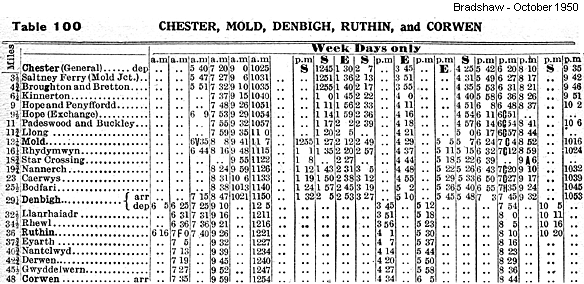 |
|
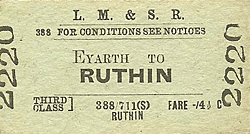
|
Eyarth Station continued to be served by goods trains and throughout the 1950s, up until 1961, land cruise trains running from Rhyl during the summer months also passed through the station. Goods services were withdrawn on the 30th April 1962 and Eyarth Station closed completely. Formal closure of the line came on the 1st March 1965 after which the track through
Eyarth Station was lifted. The last train however had run through the station in 1964.
The station building has survived and since 1981 it has been used as the Eyarth Station Country House Bed and Breakfast. Although the station has been much altered the present owners have ensured that many of the stations original features have survived. The ticket office window and station platform scan still be seen. Photographs of the station as it was in its heyday adorn the walls of the dining room. The original station well has also survived and is still capable of providing water.
Tickets from Michael Stewart, Bradshaw from Nick Catford and route map by Alan Young.
Source: From Chester to Holyhead the Branch Lines by Bill Rear. Oxford Publishing 2003
ISBN 978-0-860935-69-8
To see other stations on the Denbigh, Ruthin & Corwen Railway click on the station name: Denbigh, Llanrhaiadr, Rhewl, Ruthin, Nantclwyd, Derwen, Gwyddelwern & Corwen |

old2.jpg)

old1.jpg)
old5.jpg)
1.jpg)
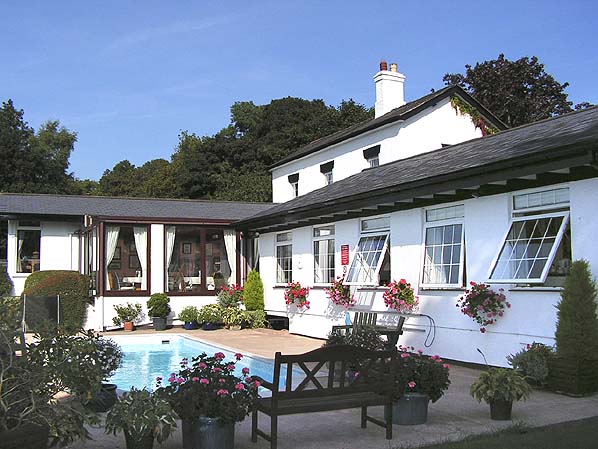
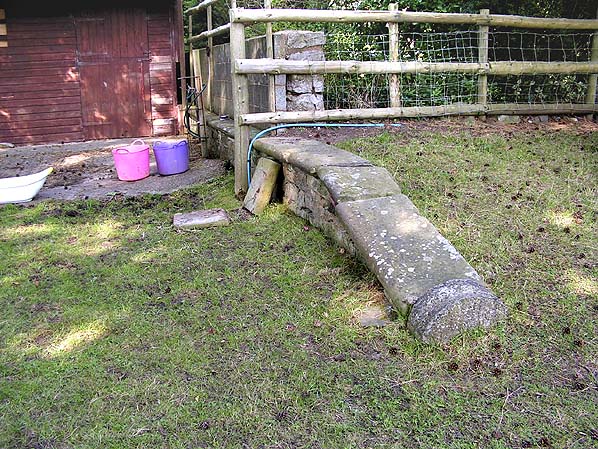
.jpg) Looking south at Eyarth station in April 2012.
Looking south at Eyarth station in April 2012..jpg) The platform ramp at the north end of Eyarth station seen in April 2012.
The platform ramp at the north end of Eyarth station seen in April 2012..jpg)



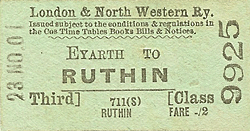

old_thumb4.jpg)
old_thumb3.jpg)

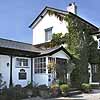







 Home Page
Home Page